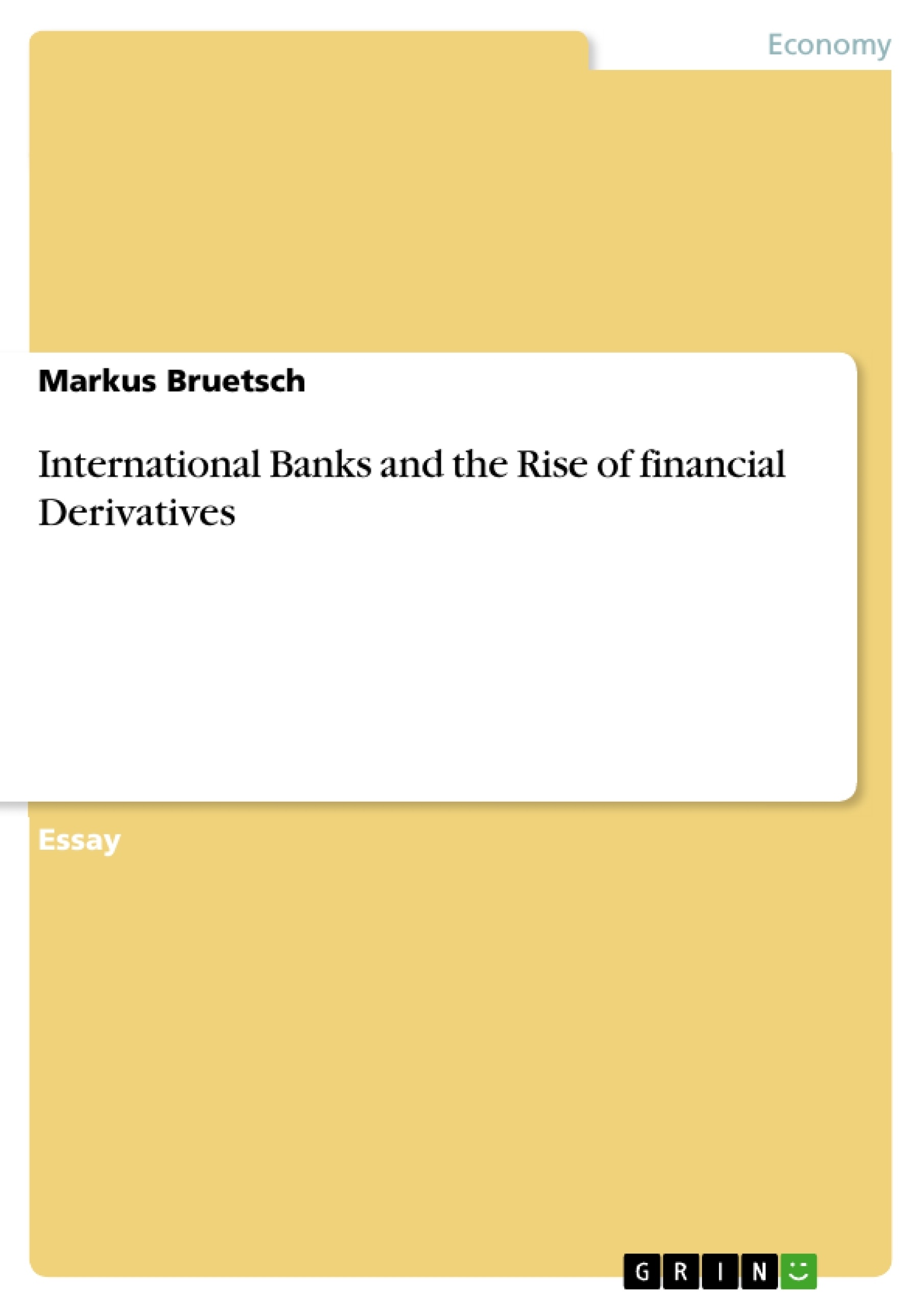Derivatives trading is now the world's biggest business, with an estimated
daily turnover of over US$2.5 trillion and an annual growth rate of around
14 per cent (Swan, 1999). Derivatives markets have ancient origins, and
a long and complex history of trading and regulation. This work examines
the history of derivatives and their impacts on the structure of
international banks in order to show the implications of modern
international banking in comparison to domestic banking. Mishkin (2003) describes banks as financial institutions that accept
deposits and grant loans. In this definition banks are the financial
intermediaries that the average person contacts most frequently for its
financial dispositions, savings, investments and payments. The structure
of a bank therefore seems to be adjusted to the purpose of its business
activity. Mishkins traditional definition of a bank includes to those financial
institutions we refer to as mutual savings banks, savings and loan
associations, commercial banks and credit unions. Their traditional core
business is to provide the settlement of national payments and to
transform funds from savers over time as well as to process market
information (Canals, 1997). They focus on domestic or regional,
eventually even local markets and realize their profits from interest
margins and balance sheet activities. Therefore they employ an asset- and
liability management in order to avoid liquidity and credit risks.
Inhaltsverzeichnis (Table of Contents)
- Introduction
- Structure of banks
- Domestic banks
- International banks
- The Rise of Financial Derivatives
- International Monetary Arrangements as an Incubator for Financial Derivatives
- Impacts on the Financial Architecture
- The Changes in the Structure of International Banks
- Risk
- Regulation
- Speculation
- Conclusion
Zielsetzung und Themenschwerpunkte (Objectives and Key Themes)
This work investigates the historical development of financial derivatives and their impact on the structural evolution of international banks, highlighting the key differences between domestic and international banking practices in the modern era.
- The historical development of financial derivatives.
- The structural differences between domestic and international banks.
- The impact of financial derivatives on the structure of international banks.
- The role of international monetary arrangements in the rise of financial derivatives.
- The implications of financial derivatives for risk management, regulation, and speculation in international banking.
Zusammenfassung der Kapitel (Chapter Summaries)
The introduction establishes the significance of derivatives trading in the global financial market and outlines the purpose of this work. It presents a historical overview of derivatives and their impact on international banking practices. Chapter 2 delves into the structure of banks, distinguishing between domestic and international institutions. It examines the traditional core business of domestic banks, including settlement of national payments, fund transformation, and information processing. The chapter further explores the different ways international banks are defined and the challenges in differentiating between domestic and international banks in today’s globalized financial market. Chapter 3 examines the rise of financial derivatives, highlighting the role of international monetary arrangements as an incubator for their development. It analyzes the impact of derivatives on the financial architecture, setting the stage for the following chapter’s discussion on the changes in international banking structures.
Schlüsselwörter (Keywords)
This study focuses on the intersection of international banking, financial derivatives, risk management, and regulation. It examines the evolution of banking practices in the context of globalization and deregulation, exploring the impact of financial innovations such as derivatives on the structure and functioning of international financial institutions.
- Citation du texte
- Markus Bruetsch (Auteur), 2003, International Banks and the Rise of financial Derivatives, Munich, GRIN Verlag, https://www.grin.com/document/14847



